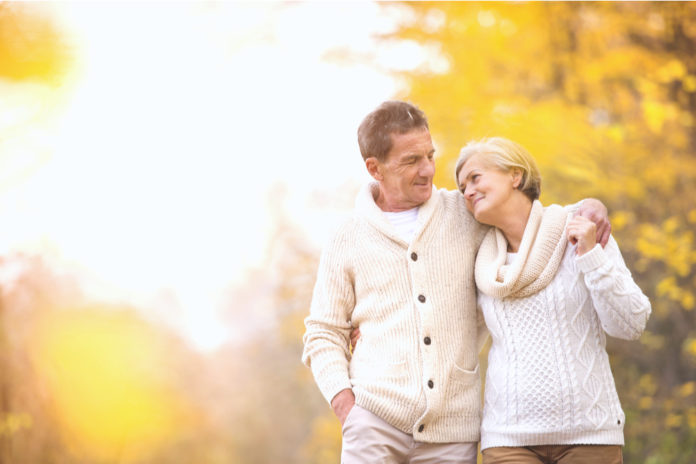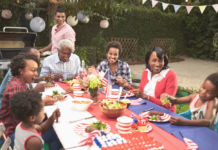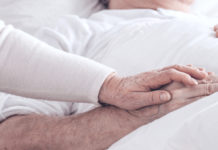From apple picking to daylight savings time, autumn is an exciting time of year and season of change. However, fall can also come with its own set of risks, especially those tied to senior falls, slips, and illnesses.
With changes in weather and holiday events coming up, be aware of these autumn safety tips. Taking such preventative measures can help create a more festive and fun season!
Top 9 Autumn Safety Tips
The top 9 fall safety tips can help make the most of autumn while avoiding seasonal hazards. They range from lighting up indoor living spaces to ensuring outdoor fall safety.
1. Light Up Living Spaces
Since daylight hours dwindle in autumn, it is important to keep the home well-lit. This can create a safer space by making tripping or slipping less likely.
Lighting Tips
Tips for lighting the living space and trafficked areas include the following:
- Place nightlights in bedrooms, hallways, or other areas that need to be accessible in the evening
- Put a lamp next to the bed within reach
- Create a clear, clutter-free path to the lighting device for lightswitches not placed near entrances
- Consider trading current lighting hardware for something more easy to see such as illuminated, remote, or glow-in-the-dark switches
- Store flashlights in accessible drawers and easy to store places (in case of emergency)
2. Discuss Concerns with a Doctor
Doctors are often aware of seasonal allergies and other safety concerns that may be worth discussing when it comes to fall.
Discuss any health conditions as well as potential concerns with a trusted healthcare team. Be sure to ask what the best course of action is in case of serious illness or an emergency.
Things to Ask the Professionals
Common things to ask and discuss with a healthcare team about fall include:
- Seasonal allergies
- Risks that increase with fall weather (such as falling on ice or slippery pavement)
- Pain or preventative management associated with weather changes (i.e. joint pain, wound protection, appropriate outerwear)
- Supplements to take or changes in dosage or medication (i.e. vitamin D needs in the fall versus the summer)
- Safe exercises to do indoors
- Seasonal vaccines (i.e. seasonal flu vaccine)
- Safe hand-washing procedures
- Maintaining skin health and moisture in the fall
- Contact information in case of emergency
- How to safely navigate holiday eating or travel
3. Exercise & Eat Well in Autumn
With the seasonal changes of autumn and falling leaves, regular workout routines may need to be adjusted.
For instance, outdoor and gym workouts might need to be swapped with at-home exercise to decrease risks and avoid infection or illness. Chair exercises can be helpful for those needing to workout at home or those with limited mobility.
During the fall season, there is naturally an increase in sugary treats and sweets available, including all things pumpkin spice! While seasonal foods can still be enjoyed, one should aim to maintain a healthy dietary regimen during the holidays.
Healthy Lifestyle Tips for Older Adults
Focus on the following tips for healthy eating and healthy aging.
- Focus on eating nutrient-dense foods (fewer total calories with a higher amount of nutrients)
- Choose a variety of foods from all the ChooseMyPlate food groups
- Talk to a Registered Dietitian Nutritionist about questions concerning eating and healthy aging
- Understand protein and its role in healthy aging
- Learn about services that provide and deliver balanced nutrition such as Silver Cuisine and Meals on Wheels
4. Remember Fall Footwear
Certain footwear choices can increase the risk of getting hurt. Shoes with little or no traction, slippers, heels, and sandals are not items well-suited for the fall.
That being said, fall is the perfect time to think about supportive footwear. Here are features to look for:
- Sturdy
- Non-skid
- Properly fitting
- Reduce joint pain (as needed)
- Suitable for rain or snow
5. Consider Assistive Devices
Since the ground can be slippery with wet leaves, consider keeping assistive devices on hand. These small adjustments can make a big difference when it comes to staying safe in the autumn.
Assistive Devices and Accessories to Consider
As the old adage says, “Better to have it and not need it than to need it and not have it.” Some devices to consider include:
- Walker
- Cane
- Wheelchair
- Backup batteries for medical devices
- Assistive railing in the home
- Handrails for stairways (on both sides)
- Treads for steps that may get slippery
- Installing or purchasing some sort of medical alert system
6. Ensure Outdoor Fall Safety
While they make a pretty fall palette, the slick surfaces coupled with fallen leaves can create a health hazard. Cleaning such outdoor walkways and paths from piles of leaves can bring on lots of work.
Depending on health conditions that affect levels of energy or quality of life, it may be wise to hire help.
Potential Services During the Fall
Consider investing in these services for a safe fall season:
- Landscaping service
- Regular raking service
- Snow shoveling service
- Emergency preparedness service/kit
- Dog walking
- Grocery delivery
- Home care nurses, physical therapists, or physical trainers
- Devices allowing for video communication with loved ones, healthcare professionals, etc.
7. Be Aware of Seasonal Depression
A condition called seasonal affective disorder (SAD) is a kind of depression that occurs in a seasonal pattern. SAD most commonly occurs in the late fall and early winter.
The human body reacts to external changes in the environment. For some, the change in seasons can trigger a period of depression that is not present in spring or summer.
While younger people tend to be at higher risk, older adults should also recognize the signs, symptoms, and risk factors. Risk factors for SAD may include:
- Living far from the equator
- Family or personal history of depression
- Women
- Low levels of vitamin D (seniors may need extra Vitamin D)
Treatment can be arranged with a healthcare team, complete with a therapist, physician, and perhaps a dietitian. A dietitian can help navigate healthy holiday eating, medication, and supplements that may help alleviate the impact of SAD.
Day-to-day ways seniors can boost mental health and wellbeing include getting outside and connecting with the community.
8. Protect the Immune System
During the aging process, certain factors can weaken the immune system. This makes it more difficult to defend the body from bacteria and other serious illnesses or infections.
Aging may also affect the digestive system, which is linked to maintaining bacterial balance. Other body systems can experience the effects of getting older, causing the body to be more vulnerable to threats.
During the fall, it is especially important to be mindful of certain healthcare conditions that may increase susceptibility to seasonal sickness. Conditions that may affect the immune system include:
- Chronic illness
- Diabetes
- Arthritis
- Cancer
- Heart disease
Some medications can also compromise the immune system, so make a point to review them with a healthcare professional.
Other ways to support immune health include maintaining a regular sleep schedule, eating a balanced diet, exercising regularly, and managing stress.
9. Combat Home Hazards
In the fall, heating systems pose a home fire hazard. Also as temperatures fall and furnaces, space heaters and fireplaces are put to use, carbon monoxide dangers rise.
Experts suggest hiring a specialist to check on heating systems, pipes, and other devices or structures such as a smoke alarm and carbon monoxide detector. Also always read instructions on heating devices (even if used in previous years) to make sure they operate safely.
Overall, general guidance for safely operating a heating device include the following:
- Never leave the device unattended
- Leave at least three feet between the device and anything flammable, such as a wall or curtains
- Ask for help in understanding how to operate or install these devices
- Hire a specialist to check on the heating system (plan ahead and do this before the cool weather comes in)
Overall, these fall safety and health tips help make the season a more enjoyable experience for older adults and their loved ones.
In such a season of celebration, the small investments in safety are worth the bigger health benefits. And, most of all, having peace of mind.
Besides, there is so much about the autumn to enjoy and protective measures make it even better!
References:
BRIA Health Services. Tips on getting ready for autumn for the elderly. Bria HS, LLC. 2020. https://briahs.com/elder-care-tips-on-getting-ready-for-autumn-for-the-elderly/.
Mayo Clinic Staff. Healthy Lifestyle- Healthy Aging. Fall Prevention: Simple Tips to prevent falls. Mayo Clinic. 2020. Mayo Foundation for Medical Education and Research (MFMER). https://www.mayoclinic.org/healthy-lifestyle/healthy-aging/in-depth/fall-prevention/art-20047358.






